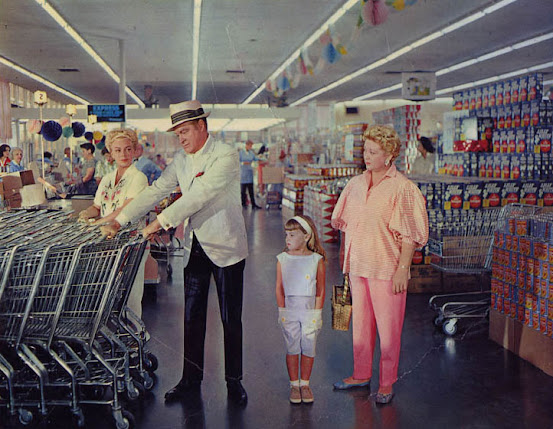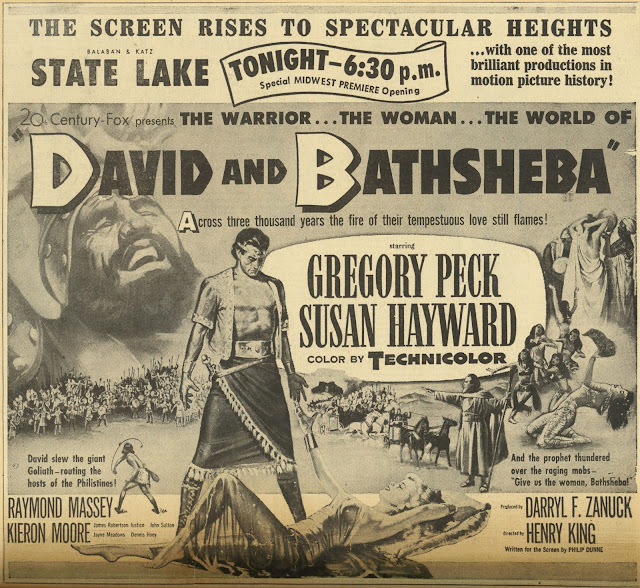The Incredible Shrinking Man Just Kept On Shrinking


Movie moments that linger a lifetime can swell up with memory so that
what you thought you saw goes way past what was actually there. Remember fourth
grade classmate Tony Gentry who told me a lion in Black Zoo bit a man’s head
off on camera, or the Lowe boys next door who swore Natalie Wood danced stark
naked in Gypsy? Maybe they were joshing, or likelier trusted their
recall, plus what imaginations implanted, because that’s how powerful a
film impression can be. These boys saw back on a sensation the way they wanted to, and
isn’t that how fond memory works across the board, not just from movies but all
of life? Gloried experience is enhanced each time we glory in it, reality
having parted and gone its useless way. Cue then The Incredible Shrinking Man,
which I knew first on a Liberty combo with Jack the Giant Killer in July 1964. This
may have been where movie madness was truly baked in, nothing to take
priority over screens again. Especially chiller or fantastic stuff. I babbled
over Shrinking Man in 2006, focus in part on a contest between Scott Carey
(Grant Williams) and a tarantula, from which but one could walk away. Dollops
of blood were spilled, or were they? I said emphatic yes to pint-size peers who
would listen, and believed myself it was so. The Incredible Shrinking Man from 1957
being back for but one day in 1964 was cushion against my being doubted, so recount could get as gory as I chose. |
My Blood-Soaked Recall of Shrinking Man Helped In Part By Scott's Dripping Clothes
|


Still, one must come to terms with truth. Do I want to die deluded as to
spillage Scott drew from the belly of the beast? Readers responded to the ’06 reflection,
several specific as to what they saw in 1957 or after. Was there a way to
determine if The Incredible Shrinking Man was trimmed at some point? An obvious
freeze-frame occurs at the moment of tarantula truth that was not there before,
this a Shrinking Man status since home video first made it available. Fans have
noted the anomaly, some inquiring to Universal, but getting no response.
Question to burn within me was how much? --- as in footage removed. Findings
indicate mere frames, three in fact as I calculate it. Am I
nuts for caring? Why don’t I just rake leaves, or help out at the animal
shelter? Long as we’re here however, might as well detail the Shrinking saga as
lately lived, with valued and considerable input from lifelong
collector/historian Todd Feiertag, with whom the topic came up quite by chance
during e-mail ping pong regarding a couple of Harold Lloyd lobby cards. Todd
and I are acquainted since halcyon days of paper pursuit and shows attendant. He
has been in the game for 57 years, a record setter on several occasions for
price realized on posters. Turns out he also has film, as in 35mm, as in two
35mm prints of The Incredible Shrinking Man, both generated in 1956 for early
1957 release. Todd volunteered to examine the relevant reel and determine what might
be presently missing from the spider scrap, tarantula tilt, however we choose
to designate it. |
Here and Below from the DVD and HD Stream Are Freeze-Frames Just Before a Last Spider Close-Up
|


Re the Shrinking Man reissue in 1964 that I saw, could new prints have
been generated at that time? Todd thought not. He suspects those still usable
from 1957 were put back in service. I wondered how the Liberty could ’64-score
not only The Incredible Shrinking Man, but Tarantula, The Deadly Mantis, and
The Mole People, all of which I saw within a month’s enclosure. Trades from the
period reference a company called Ultra Film Distributors, Inc., which was set up by Budd Rogers, a longtime Universal employee, who by the
early 60's was an independent distributor. His partner was Sherman
Krellberg, who had handled, among many properties, a brought-back White
Zombie during the 40's and 50's. The partners formed Ultra in 1962, and sub-licensed
from Universal a number of titles, ones I saw, as well as
This Island Earth, Monster On The Campus, others. Ultra also handled
exploitable imports Two Nights With Cleopatra, Fatal Desire, Rice Girl, etc. Don’t
know how long it was before Ultra folded. The Incredible Shrinking Man made its way to television in 2-65. Prints for that purpose on 16mm were complete
based on two I had over collector years. It was only with coming of home video
that critical frames went missing. |
From the Complete Universal 8mm Scene of Scott Screwing In The Nail To Do In The Spider
|

So how critical, really? And as to a mere three frames, so what?, being but the wink of an eye. Truth is, that’s a long wink. Any print where I
had to clip off three frames to make a splice was walking wounded from there. I would dread the jump forever after, and feel my audience distract each time that reel
unspooled. Digital has of course ridded us of such incubus. So why did
Universal freeze action at its most decisive point? Todd Feiertag sent the capture
at right of frames from his 1956 35mm print that are missing from circulating
versions of The Incredible Shrinking Man. I examined these, compared them with what
we presently have available, and it appears that Universal froze just prior to Scott’s
gesture in turning the nail he thrusts into the spider, in effect screwing it in
further to assure the kill. Maybe for home video purposes, Universal felt the moment
was too explicit. A pity, for here was a kicker to weld action deep
in our heads. So far as I can determine, a last time we got it intact was when “Universal
8” (as in 8mm) issued a seventeen-minute abridgement of The Incredible
Shrinking Man for home collectors. This was during the seventies. After that,
the footage went truant. Universal has not so far released The Incredible
Shrinking Man on Blu-Ray, although there have been Region Two discs. I understand from buyers that these are also incomplete re the spider scene. Kino, Shout, Scream, or
whoever, could license The Incredible Shrinking Man from Universal, put the missing frames back in, and promote a “first time in forty plus
years” complete version. We'd then know finally and for sure what we really
saw through a child mind’s eye back when The Incredible Shrinking Man had its
most vivid impact.Many Thanks to Todd Feiertag for making this column possible.

















































